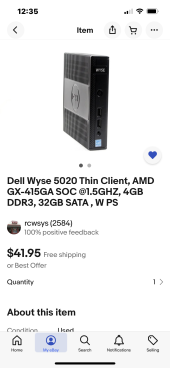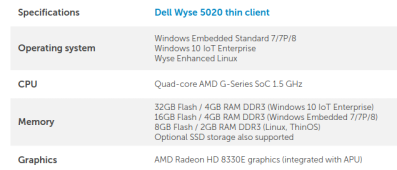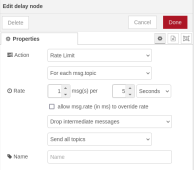6
629658
Guest
Can you shed any step by step or tips to get the VenusOS loaded on the pi? Merry Christmas!!!Like I said I have no experience with SolarAssistant so I could not tell you if it will work together or not. All I can say is what I have done on my own setup to get the data into HA.
There is indeed a big learning curve to master Home Assistant...I have had it running for about 5 years now but only did really basic stuff until a few months ago when I started with Zigbee smart lights....but that's another story. In short I would say that the learning curve is worth it! But try to find the simplest solution for your problem. If there is a plugin already for something...use that instead for example. But for Victron solar equipment there is nothing (yet) so we kind of have to right now.
I am assuming by "slim client" you are actually talking about "Thin Clients" right? That could be a better alternative to a raspberry Pi...but the biggest issue from what I have heard is cheap SD cards. And I would recommend NOT running Home Assistant on a Rpi on an SD card! It need to write A LOT to it's internal event database and that would wear out the SD card. That's why the cheap cards get corrupted easily and the system crashes. There are options to connect SSD's over USB and boot from it. I am running home assistant in docker on a basic intel NUC with a SSD. It's not super powerful but better than a raspberry pi with SD card
I was actually worried about the SD card corrupting on VenusOS too as that IS running on a raspberry pi. But the biggest reason for crashing Rpi's is corrupted SD cards from too many writes...which is what HA is doing. For VenusOS as I understood it's not writing anything to the local SD card unless there is no internet available. Normally it will upload all statistics to VRM and not keep a local copy but when the internet connection is lost you can configure it to keep the records locally on the SD card. When the connection is restored it will upload to VRM and your statistics keep their timestamps.
There are victron devices that run VenusOS but they only make sense if you got the money or need to connect a lot of devices. Once you factor in the cost of 5 VE.direct cables (30 euro x 5) and a VE.BUS MK3-USB (80 euro) then a Cerbo GX that costs about 300 euro is going to be a cheaper option. Plus the Cerbo has more features that might be useful...but I don't have one and run it on a Raspberry Pi 3.
While VenusOS is just a custom Linux image there is no official support from Victron on running it on anything else than a Cerbo GX (or other victron device). The Raspberry Pi image is provided by Victron but they do not support it directly. The idea is to ask support on their forums.
I have no idea if it will run on something else. I am assuming most thin clients would be based on an intel compatible CPU and both the Cerbo and Rpi are ARM CPU's....so that would not work. I do know a lot of the victron services that are run on VenusOS are using python so it's not really depending on the architecture of the CPU...I think.
Hope that helps.






